Two charges Q1andQ2 Coulombs are shown in fig. A third charge Q3coulomb is moved from point R to S along a circular path with P as centre. Change in potential energy is
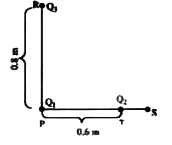
Q1Q2Q34π∈0
Q1Q2π∈0
Q1Q2π∈0
4Q1Q2π∈0
The correct Answer is:C
Topper's Solved these Questions
- APPENDICES ( REVISION EXERCISE )Book:AAKASH SERIESChapter:APPENDICES ( REVISION EXERCISE )Exercise:REVISION EXERCISE (CUTTENT ELECTRICITY )
Explore 108 Videos
- APPENDICES ( REVISION EXERCISE )Book:AAKASH SERIESChapter:APPENDICES ( REVISION EXERCISE )Exercise:REVISION EXERCISE (MOVING CHANGES & MEGNETISM)
Explore 95 Videos
- APPENDICES ( REVISION EXERCISE )Book:AAKASH SERIESChapter:APPENDICES ( REVISION EXERCISE )Exercise:REVISION EXERCISE (MOVING CHANGES & MEGNETISM)
Explore 95 Videos
- ALTERNATING CURRENTBook:AAKASH SERIESChapter:ALTERNATING CURRENTExercise:EXERCISE - III
Explore 39 Videos
- APPENDICES (REVISION EXERCISE)Book:AAKASH SERIESChapter:APPENDICES (REVISION EXERCISE)Exercise:LAW OF MOTION
Explore 91 Videos
Similar Questions
A positive charge 'Q' is fixed at a point A negatively charged particle of mass ' 'm' and charge 'q' is revolving in a circular path of radius r1 ,with Q' as the centre.The change in potential energy to change the radius of the circular path from r1 to r2 in joule is
View SolutionA positive charge .Q. is fixed at a point, A negatively charged of mass .m. and charge .q. is revolving in a circular path of radius radius r1 with .Q. as the centre. The change in potential energy to change the radius of the circular path from r1andr2 in joule is
View Solution
Knowledge Check
Two charges Q1 and Q2 coulombs are shown in figure. A third charge Q3 coulombs is moved from points R to S along a circular path. Change in potential energy of the charge is -
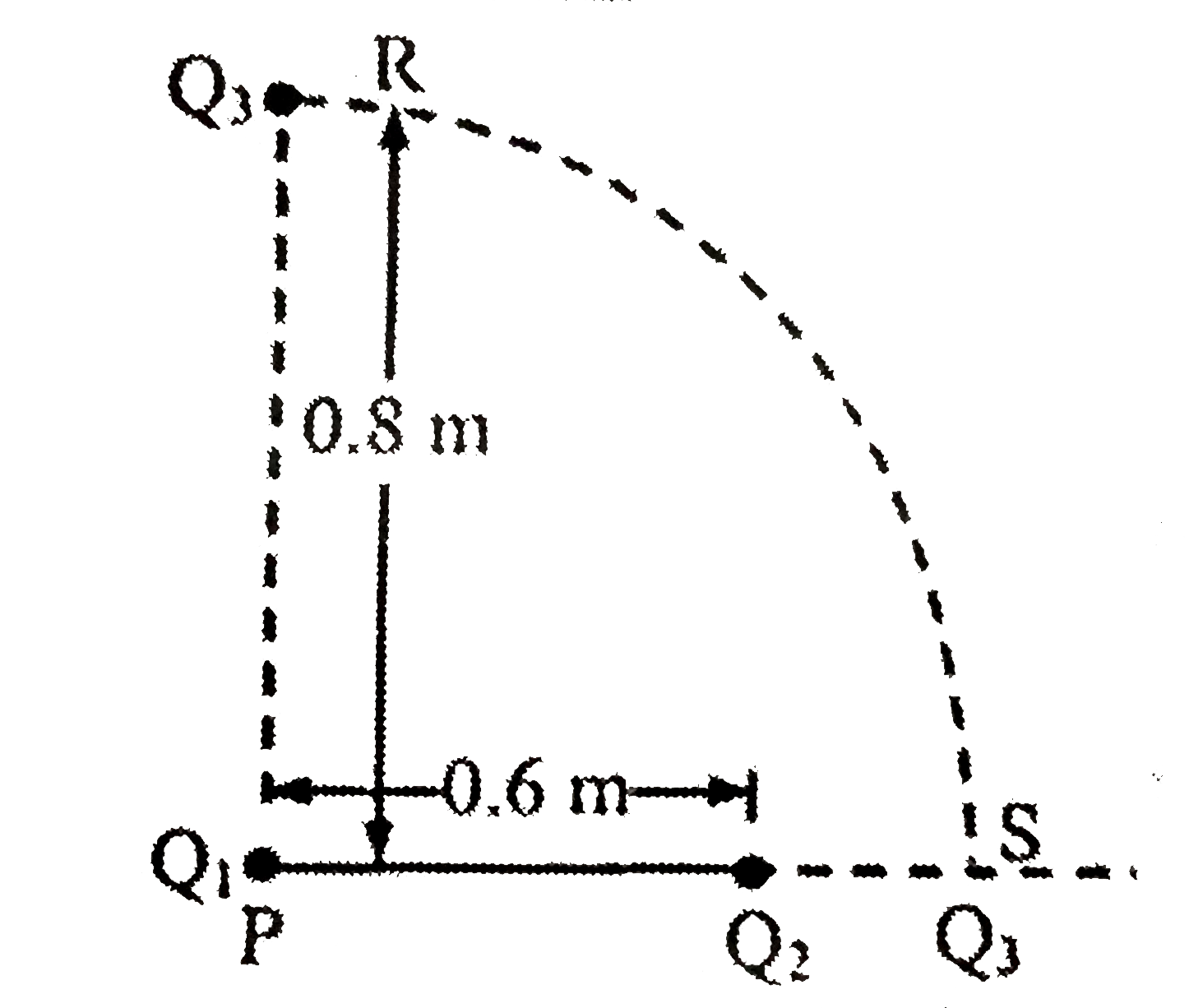 AkQ1Q2Q3B4kQ1Q2C4kQ2Q3D23kQ2Q3
AkQ1Q2Q3B4kQ1Q2C4kQ2Q3D23kQ2Q3Two charges q1 and q2 are placed 30 cm apart, as shown in the figure. A third charge q, is moved along the arc of a circle of radius 40 cm from C to D. The change in the potential energy of system is kq34πε0, then the value of k is
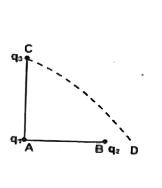 A8q2B8q1C6q2D6q1
A8q2B8q1C6q2D6q1Two charges q1 and q2 are placed 30cm apart, as shown in the figure. A third charge q3 is moved along the arc of a circle of radius 40cm from C to D. The change in the potential energy o fthe system is q34πε0k., where k is
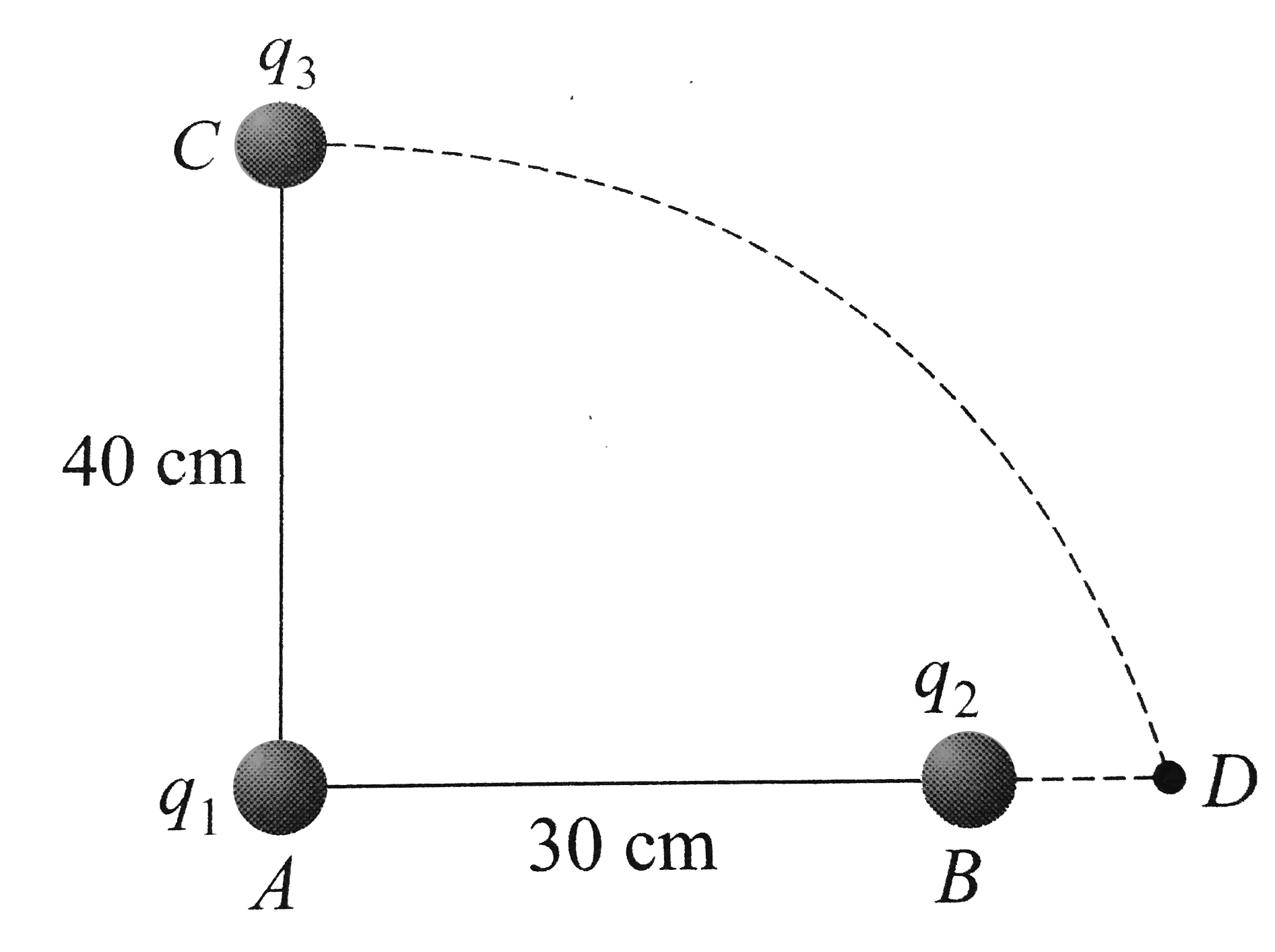 A8q1B8q1C4q1D4q1
A8q1B8q1C4q1D4q1
Two identical thin ring, each of radius R meters, are coaxially placed a distance R metres apart. If Q1 coulomb, and Q2 coulomb, are repectively the charges uniformly spread on the two rings, the work done in moving a charge q from the centre of one ring to that of the other is
View SolutionTwo identical thin ring, each of radius R meters, are coaxially placed a distance R metres apart. If Q1 coulomb, and Q2 coulomb, are repectively the charges uniformly spread on the two rings, the work done in moving a charge q from the centre of one ring to that of the other is
View SolutionFour point charges Q , q Q and q are placed at the corners of a square of side 'a' as shown in the Fig. Find the
potential energy of this system .
View Solution2q and 3q are two charges separated by a distance 12cm on x-axis .A third charge q is placed at 5cm on y−aξs as shown in figure .Find the change in potential energy of the system if 3q is moved from initial position to a point on X−aξs in circular path
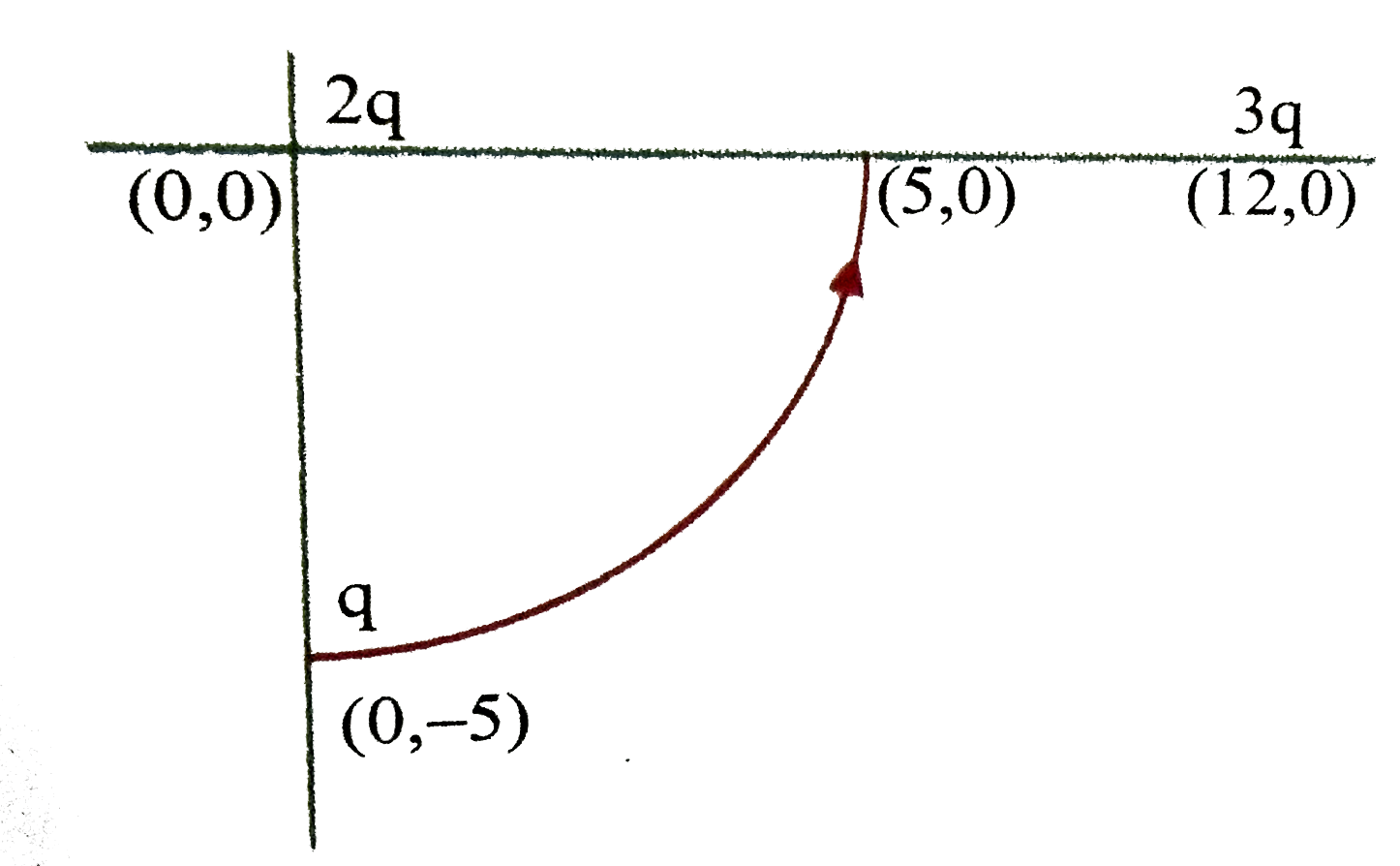
View SolutionTwo identical thin ring, each of radius R meters, are coaxially placed a distance R metres apart. If Q1 coulomb, and Q2 coulomb, are repectively the charges uniformly spread on the two rings, the work done in moving a charge q from the centre of one ring to that of the other is
View Solution
